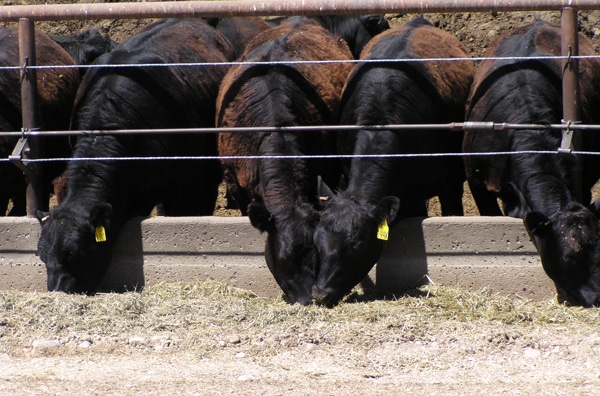As consumer awareness and concern about how cattle production impacts the environment grows, so does the debate on sustainability. But for grain-fed vs. grass-fed beef, is it really a case of one over the other?
December 8, 2016

With more attention being paid to sustainability, there is a growing debate about what constitutes sustainable beef production. This leads to the question: is there one production system more sustainable than another? And given the increased focused on sustainability, the sustainability of conventional vs. grass fed beef production is a fair question. The question of which is more sustainable is difficult to answer since it depends upon what area of sustainability you’re focused on.
For example, the grain-finishing system that represents approximately 95% of U.S. beef production is considered by critics to be the pinnacle of what’s wrong with the U.S. beef system. Critics claim the resources used to raise the grain to feed to cattle would be better used to raise food to be consumed directly by humans.
What the critics of the grain-fed beef system fail to recognize is that from a carbon footprint basis, the grain-fed model actually has the smallest footprint. The reason for this is because beef produced through the feedlot system is produced by cattle that are harvested at a heavier weight-per-day-of-age (14 – 18 months of age) and at a higher dressing percentage. What this means is the cattle are slaughtered at weights ranging from 1,300 to 1,400 pounds, and at a dressing percentage ranging from 63% to 64% generally.
Contrast this with grass-finished beef, which is usually produced from cattle that are 20 – 24 months of age or older, at weights ranging from 1,000 to 1,100 pounds and at cutouts ranging from 58% to 60%. The older age and lighter weight at slaughter of grass-fed beef means there is a higher carbon footprint in grass-fed beef.
Despite the higher carbon footprint of grass-fed beef, there is a growing consumer perception that grass-fed equals sustainable. This can be contributed to a general media basis against what is perceived as “factory farming,” and savvy marketing that capitalizes on the growing consumer segment that wants food perceived to be produced locally, naturally and sustainably.
But that’s not to say grass-fed beef doesn’t contribute to sustainability. Grass-fed beef has one very important element going for it … grass! Proper grazing management contributes significantly to carbon sequestration and a buildup of soil biomass, which contributes to not only higher soil carbon levels, but key factors such as water infiltration rate, and greater soil microbe levels.
Although this is a larger story than the average consumer cares to understand, this is an incredibly important element. Remember, though, that it isn’t unique to grass-fed system as most all beef cattle spend at least a portion of their lives on grass. And remember that the beef industry has yet to capitalize on or even begin to tell the intriguing story of how cattle ranching can contribute to carbon sequestration.
What is the beef industry to do about the growing debate about which production system is sustainable? Perhaps the answer is to celebrate both, since they both contribute significantly to sustainability. One minimizes the carbon footprint, and the other has a great story about contributing to carbon sequestration.
You May Also Like



